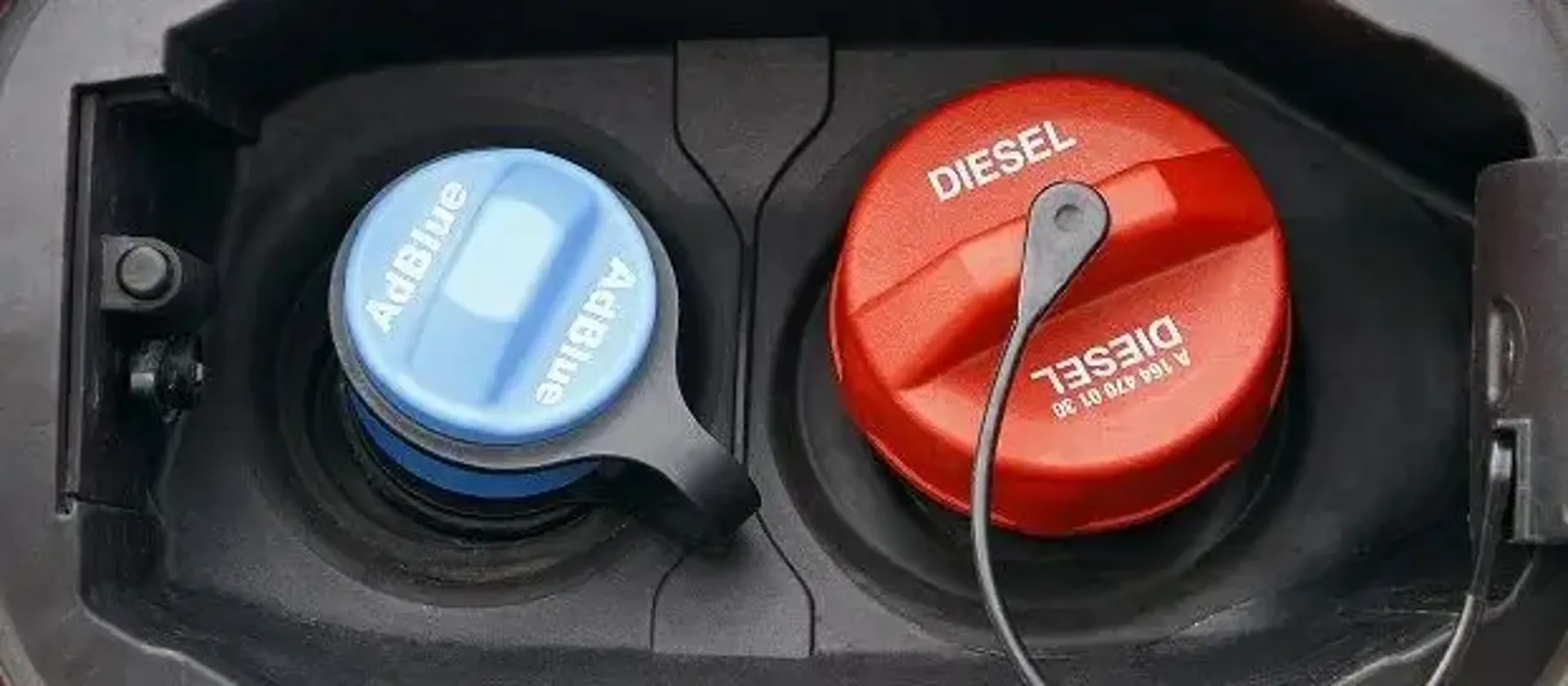02/11/2016

Fleet managers are feeling the effects of AdBlue top-ups: and with most fleets running diesel vehicles also requiring AdBlue, uncertainties about cost or where to top up aren’t going away. Here are the facts as they stand.
What is AdBlue?
While it seems like a new substance, AdBlue has in fact been in widespread use in commercial transport vehicles since 2006. It’s a urea-based solution (32.5% urea) used in the Selective Catalytic Reduction (SCR) system of diesel-powered vehicles. The purpose: to reduce emissions of nitrogen oxides, ensuring the vehicle falls within Euro 6 emissions regulations. Since September 1, 2015, newly-registered diesel vehicles have had their emissions capped at 80mg/km of NOX, a cut of more than 50% over previous regulations.
AdBlue is a proprietary name, like Hoover and iPhone: i.e. there are not different types or brands of AdBlue, though there may at any time be different brands selling other urea-based solutions that perform the same function.
AdBlue is stored in a tank in the vehicle, and is injected into the SCR system as required. The tank is not connected to the fuel system, and AdBlue is not injected into the fuel or mixed with diesel in any way. It is not a fuel additive.
On vehicles built for AdBlue, the tank’s filler cap is often located next to the diesel filler cap. On vehicles that have had AdBlue tanks installed halfway through a production cycle (for example the VW Tiguan, early 2016), it’s commonly found in the floor of the boot.
AdBlue turns nitrogen’s oxides into nitrogen and water vapour, substances not controlled by the Euro 6 regulations. The amount of AdBlue required to do this depends on engine usage. Anecdotally, it seems that AdBlue consumption varies considerably depending on distances driven and frequency of trips.
Top-up requirements
When a vehicle runs out of AdBlue, it stops—just as it would if it ran out of fuel. Top-up can be done by drivers, from pumps at petrol stations or using 10-litre containers that click onto the filler nozzle.
AdBlue pumps are designed for use by large commercial vehicles, and are not suitable for use on small passenger cars or minivans. Refilling with clip-in containers is easy for a vehicle with an AdBlue filler cap located on the outside of the vehicle, but may present problems in vehicles in which the filler cap is in the boot floor. While tubes are supplied with the container, it may be necessary to keep a funnel on board to prevent spillage.
AdBlue cannot be stored for long periods of time: it is a bio-active product that has a use-by date.
How will AdBlue affect your fleet?
Some AdBlue-equipped-vehicle manufacturers offer top-up at service intervals, but it is unlikely that a fleet vehicle will survive on a single tank of AdBlue between services. Dealers offer top-up direct, but can charge hefty premiums: a litre of AdBlue commands a price of around 30p when bought in bulk, but garages in early 2016 were charging as much as £15 per litre plus labour time.
The cost of AdBlue to your fleet, then, depends both on the refill route you choose to go down, and the manner in which your vehicles are used. As AdBlue consumption is linked to engine effort, vehicles that consume high amounts of diesel are likely to consume similarly high quantities of AdBlue.
Some fuel cards offer the option to allow or deny AdBlue spending, enabling you to keep tabs on AdBlue buying. Long term, it is recommended that fleet managers keep a close watch on AdBlue costs, tracking consumption over time and using the information to develop a fleet-wide AdBlue policy.
How are you managing your AdBlue consumption? Let us know on LinkedIn and Twitter.


